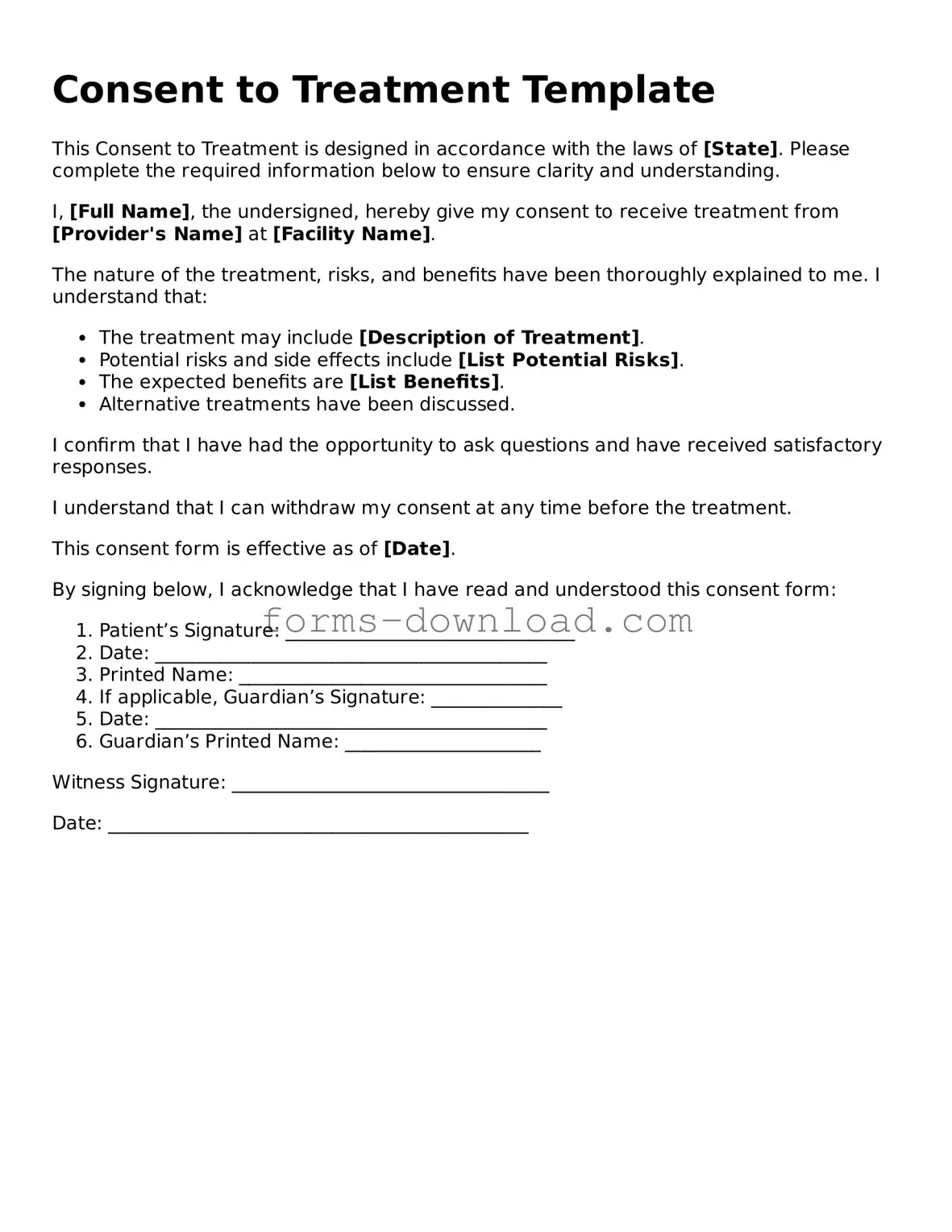Consent to Treatment Template
This Consent to Treatment is designed in accordance with the laws of [State]. Please complete the required information below to ensure clarity and understanding.
I, [Full Name], the undersigned, hereby give my consent to receive treatment from [Provider's Name] at [Facility Name].
The nature of the treatment, risks, and benefits have been thoroughly explained to me. I understand that:
- The treatment may include [Description of Treatment].
- Potential risks and side effects include [List Potential Risks].
- The expected benefits are [List Benefits].
- Alternative treatments have been discussed.
I confirm that I have had the opportunity to ask questions and have received satisfactory responses.
I understand that I can withdraw my consent at any time before the treatment.
This consent form is effective as of [Date].
By signing below, I acknowledge that I have read and understood this consent form:
- Patient’s Signature: _______________________________
- Date: __________________________________________
- Printed Name: _________________________________
- If applicable, Guardian’s Signature: ______________
- Date: __________________________________________
- Guardian’s Printed Name: _____________________
Witness Signature: __________________________________
Date: _____________________________________________
